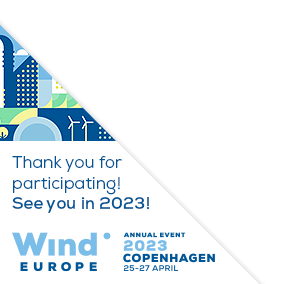Posters
Siblings:
ProceedingsProgrammeSpeakersPostersContent PartnersGlobal Markets TheatreWindTalks for InnovationProgramme Committee & Abstract ReviewersSpeaker's DashboardCome meet the poster presenters to ask them questions and discuss their work
Check the programme for our poster viewing moments. For more details on each poster, click on the poster titles to read the abstract. On Wednesday, 6 April at 15:30-16:15, join us on Level 3 of the Conference area for the Poster Awards!

PO232: Optimization of new generation wind turbine installation using a self-climbing crane
Amaia Martínez Martínez, Chief Technology Officer, HWS Concrete Towers
Abstract
The wind sector is facing the challenge of reducing energy production cost. Bigger turbines at greater heights seems to be one of the most efficient solutions. However, as the machines and towers grow, current installation means are technically and economically limited. To solve this challenge, ‘HWS Concrete Towers’, a Spanish company specialized in precast concrete, has developed an innovative climbing crane for a more cost-efficient installation of new generation wind turbines. The AirCRANE SYSTEM is a brand-new patented technology that allows for an effective, reliable, low cost and lower “carbon footprint” installation of the complete wind turbine. This crane climbs along the exterior of the tower, gaining altitude in parallel to the tower construction. Its main advantages compared to existing cranes are: •It can install theoretically unlimited WEIGHT at unlimited HEIGHT: It can lift wind turbines of +165 t at heights >240 m. •It costs around a 25% of a common equivalent crane since it is a simpler machine with also less maintenance. •It operates at high wind speeds (up to 20m/s), avoiding delays due to winds of more than 8-10 m/s. •It has more efficient transport and logistic: a fifth of the trucks are needed for its transportation, it is faster to assemble (one day versus 5 days), and it uses only 25% of the pad. •In addition, a de-scaled version of the AirCRANE could also be used for major repairs of the wind turbine. This considerably reduces the OPEX, by avoiding large cranes for just punctual interventions.










Follow the event on: